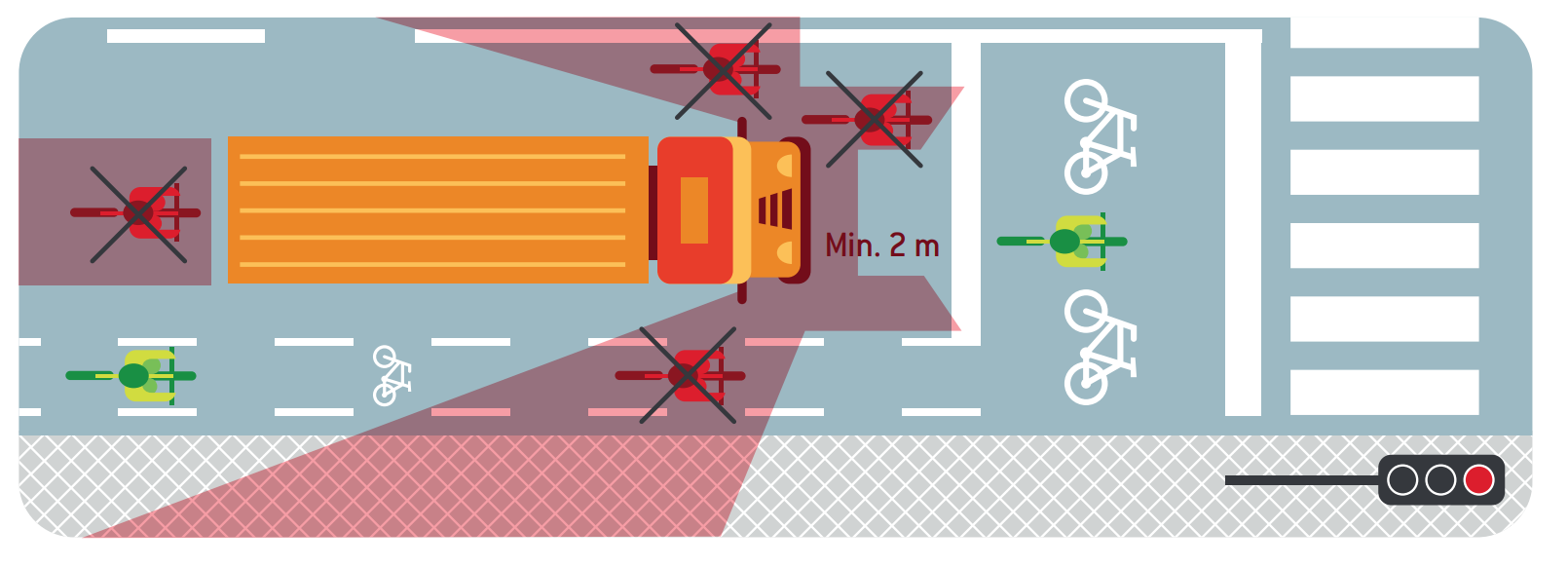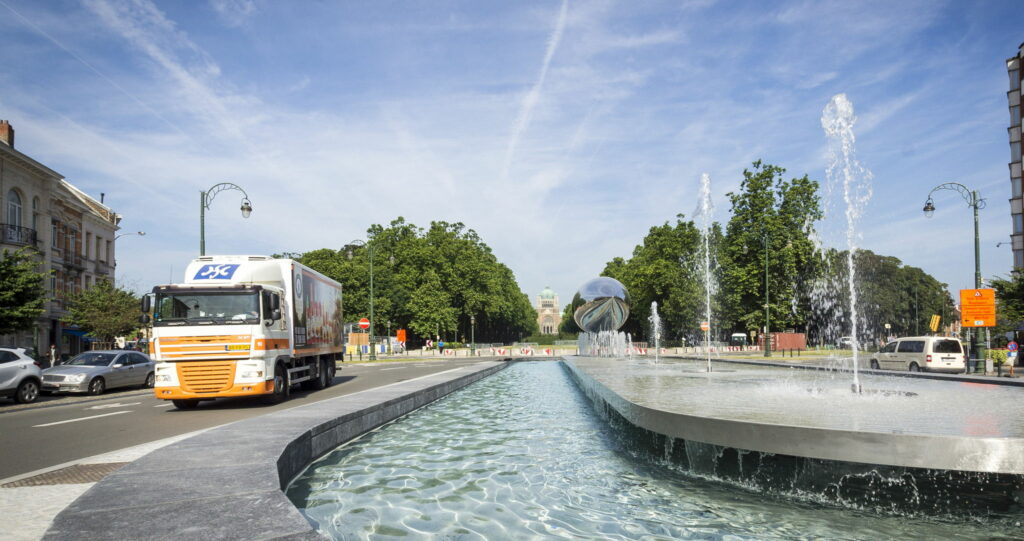In urban areas with much motorised traffic, such as Brussels, the blind spot is one of the biggest hazards for pedestrians and cyclists. In 2024, three in nine fatal traffic victims were involved in a lorry blind spot accident.
Every year, 380 accidents involving a lorry or van are reported in the Brussels-Capital Region, many of them involving a collision with vulnerable road users (pedestrians, cyclists, e-scooters or motorised two-wheelers). In those accidents, 10% of victims die or are severely injured.
"A typical blind spot accident in the city happens when a lorry driver starts driving again and fails to see that a pedestrian is crossing just in front of the vehicle or that a cyclist is going straight ahead while the lorry is turning right," said Isabelle Janssens, road safety coordinator at Brussels Mobility. "Or a driver changing lanes or directions and hitting a motorised two-wheeler that is on another lane at the same height."
When people think of the driver's blind spot, they immediately think of the two sides of a vehicle that are not visible in the rear-view mirrors. While this is true, it does not end there, stressed Brussels Mobility.
A lorry, for example, has four main blind spot zones: the left and right sides outside the area covered by the mirror, the rear of the vehicle, as well as the front, right next to the driver's cab, and the blind zones due to the height of the windscreen.

Illustration image showing a lorry's blind spots. Credit: Brussels Mobility
In Brussels, no intersection specifically stands out as being particularly dangerous in terms of blind spots; this type of accident can happen anywhere.
Therefore, Brussels Mobility is taking general measures that minimise the risk of a collision. Creating specific areas for cyclists at traffic lights allows them to be more visible and leave earlier than other vehicles. If there is no such area, the stop line is placed at a certain distance from the traffic light.
Additionally, at pedestrian crossings with traffic lights, the stop line is placed at a certain distance from the traffic light so that the pedestrian is visible to the driver. Some intersections are laid out 'Dutch-style', with almond-shaped traffic islands for better visibility of each road user.
What to do as a driver, pedestrian or cyclist?
For motorists, Brussels Mobility has six important pieces of advice: adjust and maintain your mirrors properly, know and check blind spots, use an effective viewing technique, be vigilant when manoeuvring, be mindful of vulnerable road users, and adapt your driving style to the environment.
The agency also issues some tips for pedestrians and cyclists: do not stand in the blind spots of a lorry or bus (especially avoid the sides directly in front of or behind the vehicle), wear light or reflective clothing (especially when there is little light), preferably cross safely at a pedestrian or bicycle crossing, be particularly vigilant at intersections and traffic lights as lorry drivers can turn there without seeing you.
"And importantly: never overtake a lorry on the right, especially at an intersection, and never assume that a driver has seen you, even if you are close to the vehicle. Always try to make eye contact."

